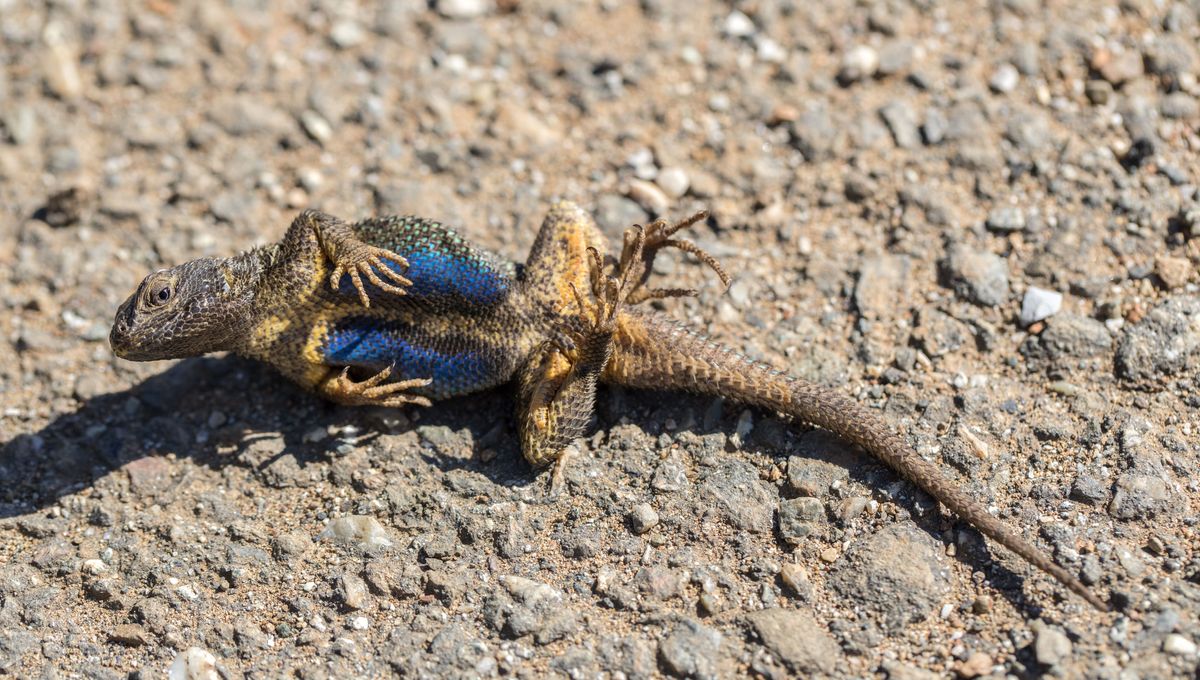
Corneous scales are a type of skin appendage most associated with reptiles, but they are thought to have made fur and feathers possible, thus playing a big part in our own evolution. A new fossil provides evidence they evolved in the Permian era, before the first major split in land-dwelling vertebrates’ family tree.
Few things are as fundamental to an organism as a way to maintain the separation between what is inside and the outer world. Fish have long dealt with the problem through a layer of scales over their skin, the strength adapted to suit their lifestyle. Among land-living vertebrates, there is more diversity, but a fossil-rich slab suggests it may all stem from common origins.
The piece of Permian rock from Bieganów, Poland, is, according to a team led by Dr Sebastian Voigt of the Urweltmuseum, “remarkable in three ways.” The slab contains hundreds of footprints and impressions of bellies, some of which are so clear that the impression of scaly skin can be seen. Moreover, it provides clues allowing Voigt and co-authors to identify the maker of the prints as a diadectid, considered the ancestor of amniotes – a category including reptiles, mammals, and birds.
This, in turn, suggests that corneous scales – those formed from keratin – were with us from the very start of the amniotes.
Keratin has since proven a most useful and adaptable protein, one that is in our fingernails and hair, as well as the feathers, beaks, claws, horns, and hooves of other animals. The world would look a very different place without it.
Although most amphibians have found a different path to maintaining structural integrity, some also have corneous scales. This has led to the question of whether these appeared separately through convergent evolution, or if scales made of keratin predate the time before amphibians and amniotes diverged.
Although the authors admit the possibility the scales that made these impressions had a different composition, they argue this is unlikely. “The relief thickness and sharpness of the impressions suggest that they are owing to hard and sharply contoured scales. As most skin appendages in tetrapods, especially those used for mechanical protection, are made of hardened keratin, this is also the most parsimonious explanation in this case.”
Given how recently the diadectids had broken away from the ancestors of amphibians, this appears to make the case for corneous scales being a common heritage, although even older fossils will be required to confirm it.
The next task, the authors suggest, is to look for evidence that keratin was being deployed in more ways than simply scales at this point, such as claws.
The study is published in Biology Letters.
Source Link: Scales That Led To Hair And Feathers Evolved Before Reptiles, 300-Million-Year-Old Fossils Hint